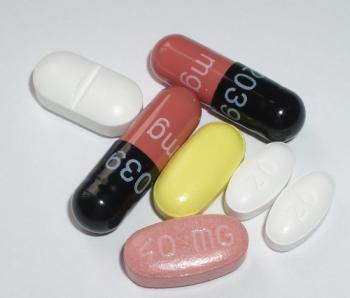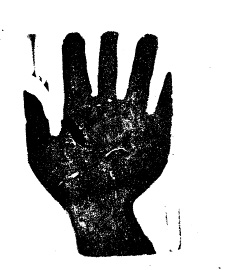 GOALS: (from Wall Street leaflet, 1987):
GOALS: (from Wall Street leaflet, 1987):
1) Immediate release by the Federal Food & Drug Administration of drugs that might help save our lives.
2) Immediate abolishment of cruel double-blind studies wherein some get the new drugs and some don’t.
3) Immediate release of these drugs to everyone with AIDS or ARC [‘AIDS-related complex’ – ed].
4) Immediate availability of these drugs at affordable prices. Curb your greed!
5) Immediate massive public education to stop the spread of AIDS.
6) Immediate policy to prohibit discrimination in AIDS treatment, insurance, employment, housing.
7) Immediate establishment of a coordinated, comprehensive, and compassionate national policy on AIDS.
SUCCESS IN ACHIEVING SPECIFIC DEMANDS / GOALS: 5 points out of 6
SURVIVAL: 1 point out of 1
GROWTH: 3 points out of 3
TOTAL: 9 points out of 10
Though it didn’t achieve some of its loftier goals, ACT UP is credited by many for the subsidised availability of AIDS treatments today, and the amount of public support and funding there is for sufferers.
HIV, the ‘human immunodeficiency virus’, is a virus that damages the immune system and weakens a person’s ability to fight everyday infections and disease.
AIDS (‘Acquired Immune Deficiency Syndrome’) is the label used to group together several potentially life-threatening infections and illnesses that happen when someone’s immune system has been severely damaged by the HIV virus.
In 1987, the HIV/AIDS epidemic in the US was still localised to urban centres, most notably gay men in New York City (NYC).
In early 1987, the writer Larry Kramer gave an impassioned speech at New York’s Gay and Lesbian Community Services centre about the apathy he saw in response to the devastation that HIV/AIDS was wreaking on the gay community. Kramer called for a new organisation.
Two days later, 300 people attended the first meeting of the AIDS Coalition to Unleash Power (ACT UP).
On 17 March, it was announced that the US Food and Drug Administration (FDA) had approved the anti-viral drug azidothymidine (AZT) for the treatment of AIDS, just two years after it entered the approval process, as opposed to the typical 8–10 years for a drug of its class.
None of the other drugs in development to fight AIDS were given this same speed-up.
Later that day, pharmaceutical company Burroughs-Wellcome announced that the drug’s cost would be upwards of $10,000 for a single patient annually, making it the costliest drug ever developed.
Wall Street actions
On 24 March 1987, 250 members of ACT UP protested on Wall Street, NYC, starting at 7am.
Waving signs, including the historic slogan ‘SILENCE = DEATH’, and chanting ‘Act Up, Fight AIDS!’, they called attention to the inequitable alliance between the FDA and Burroughs-Wellcome. Protesters sat in the street, stopping traffic, leading to 17 arrests.
Several weeks later, the FDA announced the speed-up of other AIDS-fighting drugs, and many groups credited ACT UP.
On 24 March 1988, the first anniversary of their initial Wall St protest, ACT UP protested once more. Through waves of obstruction, protesters managed to stop traffic along Wall Street for several hours, until 111 people were arrested for obstruction.
This protest, much like the first one, called attention to the FDA’s collaboration with Burroughs-Wellcome to price gouge in relation to AZT, then the only option for patients with AIDS.
On 11 October 1988, hundreds of ACT UP activists attempted to enter the FDA headquarters in Rockville, Maryland, but were prevented by police.
Sell Wellcome!
After devoting its energy to other issues affecting AIDS patients, such as a lack of housing and the denial of civil rights, ACT UP returned to the issue of drug availability and pricing.
On 25 April 1989, four activists from an ACT UP subgroup called ‘Power Tools’ used steel plates to seal themselves inside an office of Burroughs-Wellcome.
They demanded a price reduction for AZT of at least 25 percent.
In early September, the FDA announced that AZT could delay the onset of AIDS. Demand vastly increased. Burroughs-Wellcome stock rose 40 percent – but they maintained the price of the drug.
On 14 September, members of Power Tools entered the New York Stock Exchange. Five entered the VIP balcony overlooking the trading floor and chained themselves to it, and unfurled a banner that said ‘SELL WELLCOME’.
As the stock exchange began to function, the Power Tools five sounded marine foghorns that drowned out the traders, leading to a five-minute pause in trading.
About an hour after the five were removed, 1,500 activists arrived to cause pandemonium.
As they sounded foghorns, the protesters handed out pamphlets and implored traders to sell Burroughs-Wellcome stock.
Several days later, Burroughs-Wellcome announced a 20 percent reduction in price.
The ACT UP victory established the voices of people with HIV/AIDS as legitimate in discourse about their standards of care. It validated AIDS activism as a legitimate field, making it easier to gain victories and recognition in the future.
ACT UP still exists today.


